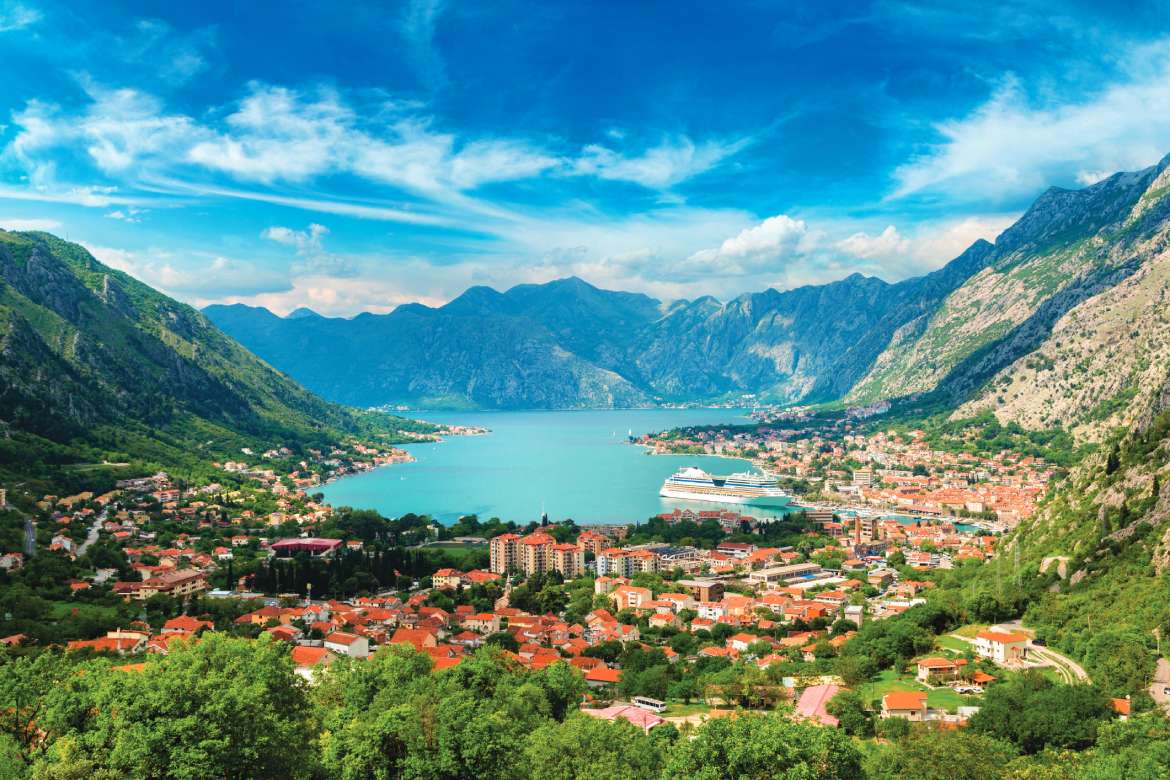After waving goodbye (make that good riddance) to my driver, I head straight into the fortified city and to the front desk at Astoria Hotel Kotor. This bewitching little gem is set within a heavy, stone building and is one of a handful of Astoria-branded hotels along the bay. It’s just perfect: The English-speaking check-in agent is a delight, the price point is just right for a working travel writer, and my spacious room offers shuttered windows that overlook a gorgeous medieval square below.
Kotor’s labyrinthine streets are intoxicatingly narrow and romantic, though there aren’t really that many of them. The walled city is easily strollable within an hour depending on how many jewelry shops, art galleries, and repetitious gelaterias tilted toward tourists you want duck in and out of. My favorite pastime here is to simply idle in Kotor’s town square, which has earned the nickname among some as the Square for Cats. A haven for felines, there are hundreds milling about in Kotor, and as a cat person myself I join the queues of tourists vying for their scattershot attention and refusal to return affection in exchange for treats. There is a cat souvenir shop in town (Cats of Kotor) and even a museum (Kotor Cats Museum).
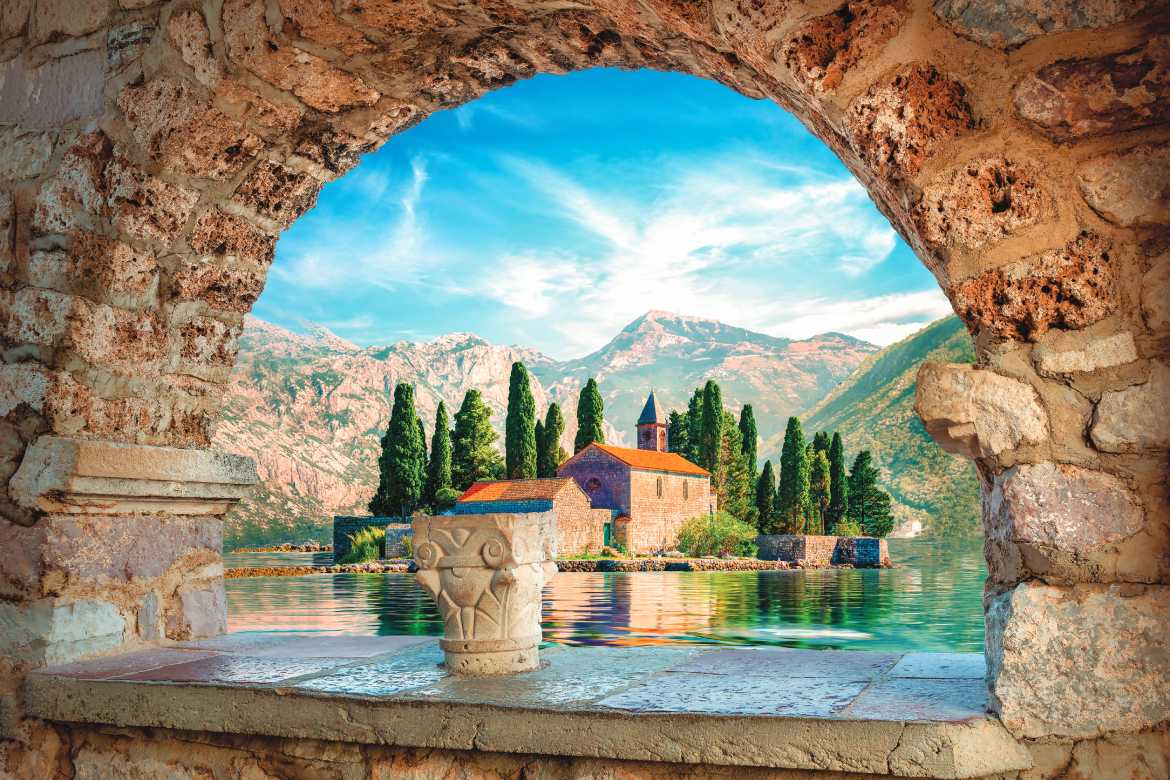
View on St George island from Our Lady of the Rocks at Perast, Montenegro (Photo by Givaga)
Boarding a boat for a full or half-day sail is the best (and most popular) way to explore the region, and tour operators promise to zip visitors around the bay to nook-and-cranny sights like the Blue Cave, the submarine tunnels of Luštica (built by the Yugoslav army), and Our Lady of the Rocks (an artificial island). I’m ready to board a sunset cruise myself until a sudden downpour forces me back to my hotel room for a badly needed nap.
By dinner time, the rain has picked up yet again and this time I am huddling under one of several awnings at a highly rated local restaurant called Cesarica and waiting for my cocktail, while droplets of water slowly fill in the cracks in the cobbled streets. Unlike most restaurants which fan out across the old city’s numerous plazas, Cesarica is tucked away down a narrow alley and my seafood risotto is a fitting complement to the romantic ambiance.
After dinner I walk the streets in search of gelato and I stumble upon a place where I get a scoop of dark chocolate for $1. Kotor is a tourist hub, and as I hand over a Euro for my ice cream I notice how strange it is to hear the trumpeting chatter of Americans after three days in Albania. On Scruff, a Russian-Bulgarian man invites me over to his house. When I politely decline his response is only a laughing emoji.
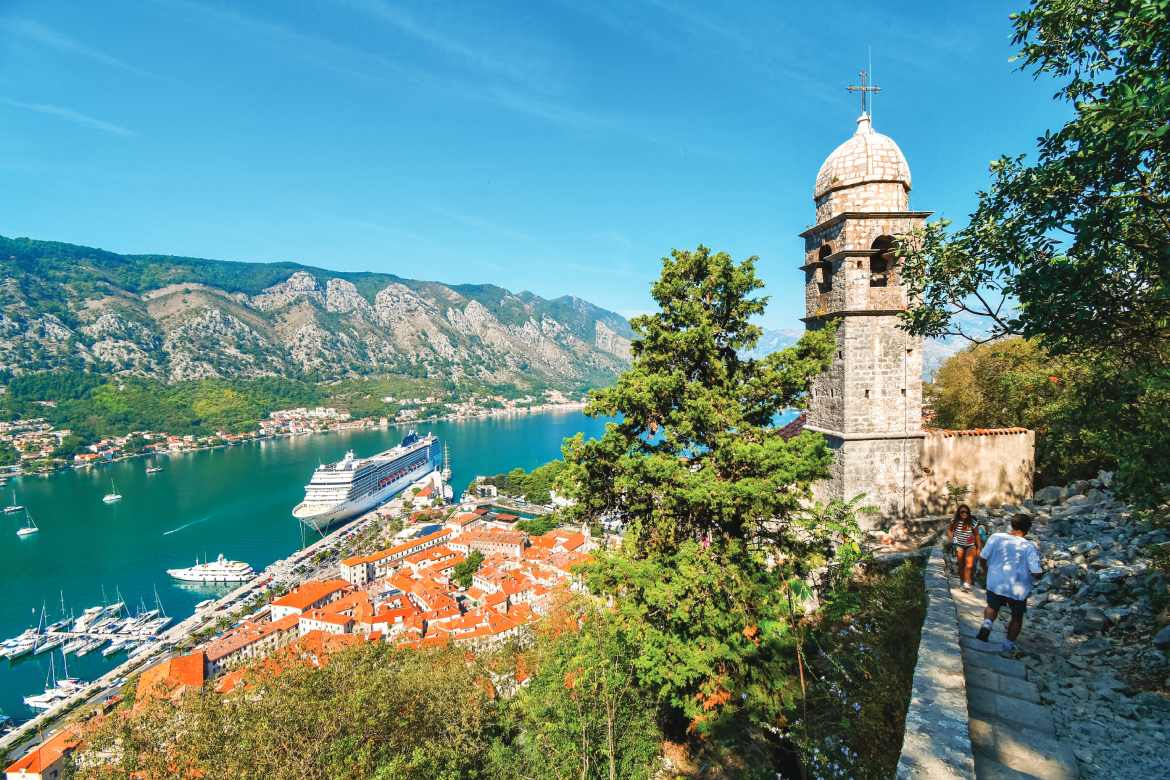
Fortress of San Giovanni, overlooking the Bay of Kotor in Kotor, Montenegro (Photo by Kirk Fisher)
It seems I’m the only one awaken by the clanging of church bells the next morning, so at dawn I decide to climb to the San Giovanni Fortress overlooking the city—an hourlong hike which begins in the Old City. Along the way I’m treated to medieval backyards where lines of laundry are strung like a family of paper dolls and where each of the 1350 steps to the top reveals Byzantine rooftops and bay views. I barely have enough time to take in the scenery from the very top when Mother Nature begins pelting me with hail, a sign that it’s time to return to my hotel, pack my things, and board a bus to Croatia.
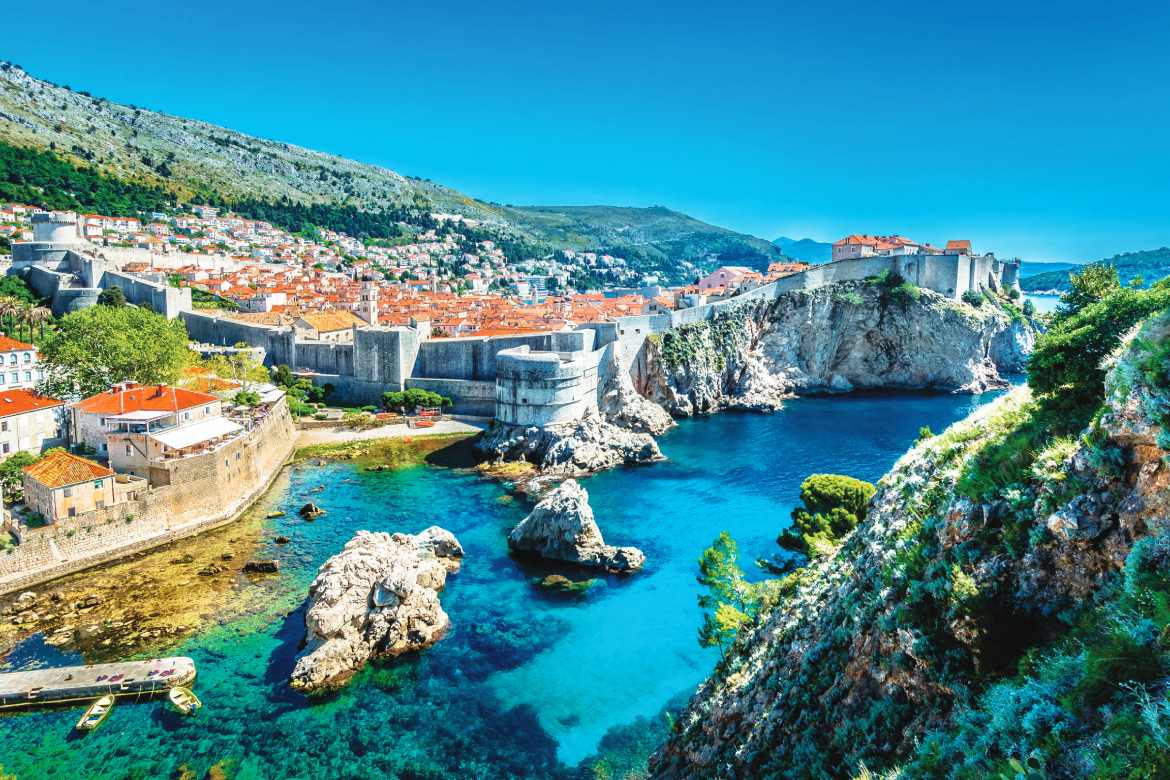
Dubrovnik, Croatia (Photo by Dreamer4787)
It takes several hours by bus to travel from Kotor to Dubrovnik, and it’s a hair-raising ride thanks to a delayed departure and a driver who is clearly trying to make up for lost time. The road out of Kotor hugs the bay for much of the journey, and due to its puzzle-piece configuration offers sweeping views in all directions of luxury yachts swaying in tandem in the bay and shingled homes scraping the base of verdant mountains. I want to yell “stop” every few seconds for photo ops, but am not even sure the driver would understand me.
Croatia is no gay mecca, but thanks to its popularity with tourists is a lot more LGBTQ friendly than other Balkan nations. In Dubrovnik, I see lovey-dovey queer couples strolling the streets of the Old Town, groups of gays sunning themselves on Lokrum Island (more on that later), and gaYmers lining up inside Game of Thrones souvenir shops for an Iron Throne selfie.
Who can blame anyone for falling for Dubrovnik? From a ridge above the walled city our bus rattles past it offering an aerial view of its rugged fortress features, terra cotta roofs, and pirate ships bobbing in harbor for the benefit of GOT nerds. Most tourists enter the Old Town through Pile Gate, and there’s no way to walk through the impressive stone archway and not feel like royalty.
My apartment-style homestay is right in the thick of the action, though it would be hard to book an accommodation in the Old Town that isn’t in the center of it all. My first order of business is to join a Game of Thrones walking tour. Although my level of fandom doesn’t rise to that of the quartet of coworkers at my office back home who dressed in costume to honor the series finale in 2019, it seems like a sensible way to orient myself to Dubrovnik and learn its history.
It was an excellent decision. Armed with a binder showcasing photo replicas of the exact scenes from the show, our guide shows us Pile Bay (aka Blackwater Bay) where King Joffrey ordered all Robert Baratheon’s bastard children be killed so they wouldn’t threaten his claim to the throne, the shoreline where Myrcella departs by ship to Dorne for her safety, Fort Lovrijenac (aka the Red Keep), and of course the steps where Cersei takes her legendary walk of shame, among others. The whole thing is a ton of fun for $23, offers excellent views of the city and beyond, and is easily bookable last minute since tours are offered daily and by multiple tour operators. Plus, this cute straight guy from Strasbourg, France latches on to me thanks to his interest in American football and the fact that I’m wearing an LA Rams t-shirt (given to me by my boss).
It’s hard to hide from the tourist massesin Dubrovnik, but quiet Boskovic Square offers excellent Kopun Restaurant, an eatery named for the capon rooster (once a mainstay of European diets) and boasting outdoor seating under a leafy pittosporum tree. The menu focuses on traditional Croatian dishes from both sea (octopus ragout over polenta, or sardines served with potato and onion salad) and land (capon chicken in a porcini mushroom sauce) complemented by a laundry list of Dalmatian wines. Warning: Unlike neighboring Albania and Montenegro, touristy Croatia is no bargain.
If there’s a slice of gay heaven in Croatia, it’s Lokrum Island. A rocky outpost completely blanketed in pine, Cyprus, and olive trees just a stone’s throw from Port Dubrovnik located in Old Town (ferries go back and forth all day long and it take just 15 minutes each way), this is the city’s version of Central Park. There’s a handful of things to do on the island including wandering the old monastery grounds, visiting the botanical garden, and swimming in the “Dead Sea,” an inland body of water popular with families. I make a beeline for the clothing optional beach reachable via an easy footpath that veers to the left of the dockside restaurant.
Bereft of sand, the beach is more like a series of stone slabs tiered like a wedding cake and cascading right down to the sea where the cobalt blue waters of the Adriatic bleed an irresistible turquoise. Step ladders allow for easy access in and out of the water, which is a balmy temp. There are around 30+ folks spread out across the various plateaus, most of them nude and many (though not all) are gay men. As I spread out my towel, strip down, and let the Mediterranean sun erase my Speedo tan lines I notice a couple of cuties taking photos, no doubt for their Instagram or Only Fans feeds. They are Newton, an American expat from Detroit now living in Berlin, and Juan, a fashion designer based in Mexico City. They are both cute AF and I have no problem striking up a conversation with them and joining them in their photo-taking tomfoolery along with a day of swimming and cooking our cakes under the Adriatic sun.
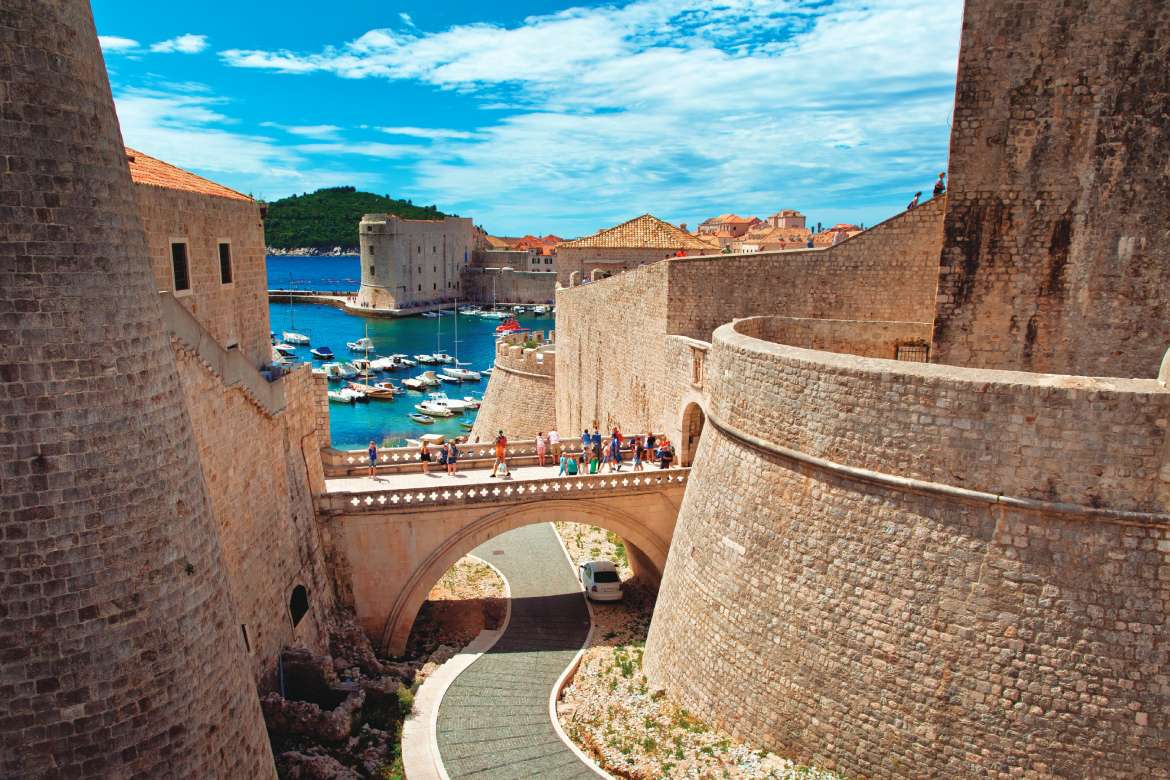
Dubrovnik city wall in Croatia (Photo by Ekaterina Kupeeva)
Strolling the Walls of Dubrovnik, the city walls that ring the entirety of the Old Town and kept it fortified during medieval times, I stumble upon Buža Bar (meaning hole in the wall), where you can literally have a drink on the rocks while sitting on the rocks. The bar is one of several in the city that clings to the side of the cliff like a daredevil mountaineer and offer the most weepy and sublime views. Tonight’s sunset is perfect and, of course, everyone is here. Like many folks who can’t snag a table, I find a rock just outside the bar’s perimeter and settle in as the sun waves goodbye to Dalmatia and gets ready to greet the Americas.
There’s one final dinner to be had in the Balkans and thanks to a “just in the nick of time” recommendation proffered from a foodie friend just a few days before I departed for Europe, I am able to snag the last table at 360 Dubrovnik, a Michelin-starred restaurant perched above Old Town. Everything is perfect here, including sweeping city views, a bottle of still water kept purposefully out of reach so that I never have to refill my glass myself, and a multi-course, prix fixe menu that rotates constantly, but might include pan seared pigeon with foie gras, oat risotto and hazelnuts, or a lime ravioli octopus with fennel. With a belly full of Croatian delights. I head back to my hotel to rest up and ready myself for a nonstop flight to Paris the next day.
A friend and I in Los Angeles like to joke that every now and then it’s nice to take a “straight-cation,” and go someplace completely without thumping club music, twerking twinks, and mugging drag queens. Right now, the Balkans are such a destination. Europe’s last great bargain, they are a place to enjoy hundreds of miles of unspoiled coastline, medieval cities that are also forward thinking, and aside from one Montenegrin driver, the friendliest of locals.


